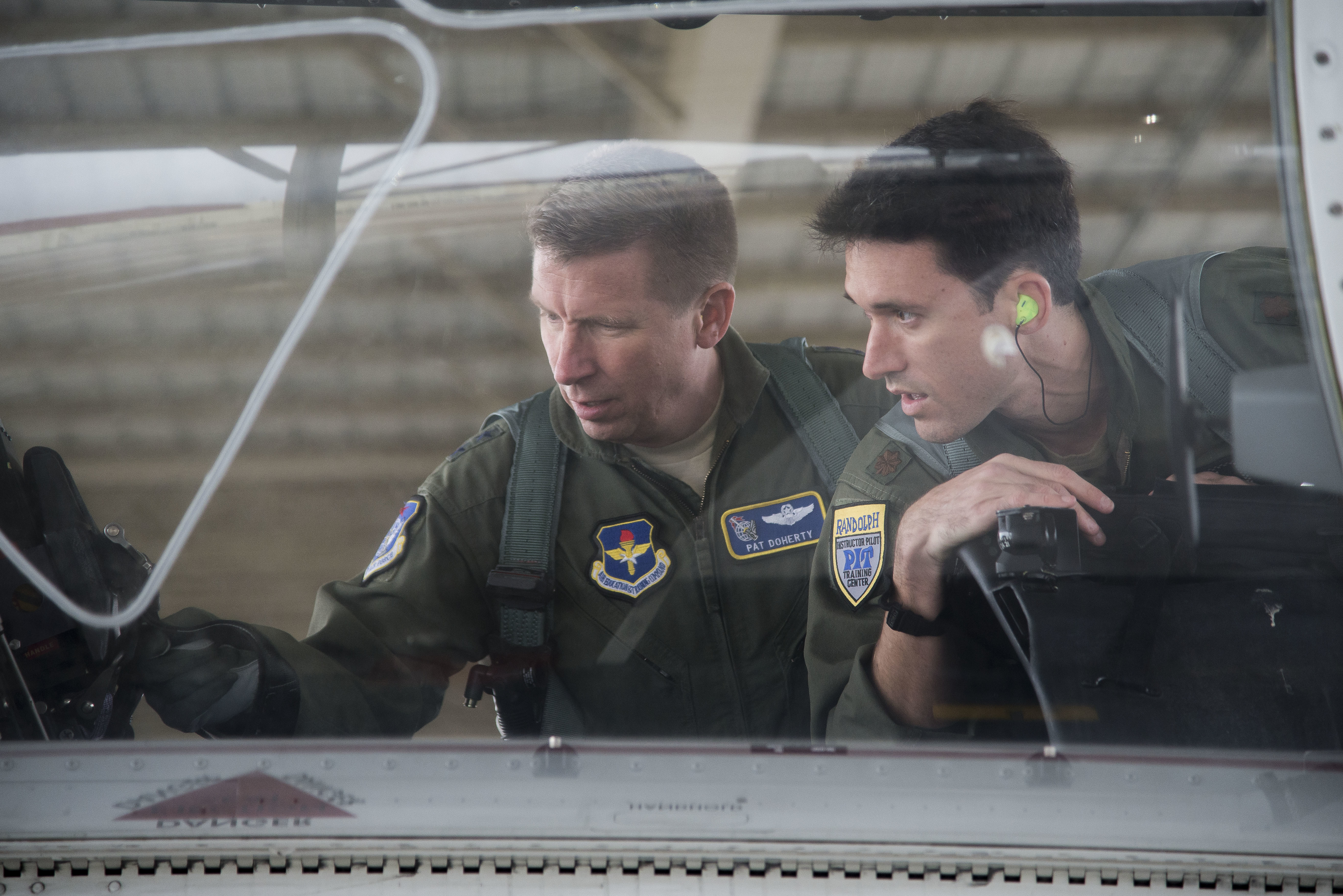
Maj. Gen. Patrick Doherty, 19th Air Force commander, and Maj. Lincoln Olsen, T-6 instructor pilot, conduct a safety check on a T-6 Texan II before conducting an operational demonstration at JBSA-Randolph, Texas, Feb. 21, 2018. Doherty was on the flightline getting test data first-hand during the command-wide T-6 operational pause. Air Force photo by Sean Worrell.
The T-6 returned to flight on Tuesday, almost exactly a month after the service’s primary trainer was grounded following reports of hypoxia-like symptoms at multiple bases.
The final root cause has not yet been determined, but 19th Air Force Commander Maj. Gen. Patrick Doherty said in a press release that several “component failures or degradations” were identified that were “affecting the topline performance” of the On-Board Oxygen Generating System [OBOGS] “oxygen pressure, flow, and content, resulting in various disruptions that negatively impacted the human-machine interface.”
After the “operational pause” was implemented on Feb. 1, Doherty stood up a team of experts from the US Air Force, the US Navy—which has had similar issues with its T-45 Goshawk trainer—NASA, and various medical specialties “to aggressively capture and analyze data from pilots who had experienced physiological events and the aircraft,” states the release. More than 40 pilots participated in flight tests, according to the release.
Air Education and Training Command boss Lt. Gen. Steven Kwast told reporters last week at AFA’s Air Warfare Symposium that team had discovered problems with the aircraft’s “shutoff valve” and “with the reservoir,” which holds the oxygen, but Kwast emphasized it was still too early to determine whether that was the root cause or “what to do about them.”
Instructors will return to flight first to “regain currencies,” and students will follow by the end of the week, according to the release. In the meantime, engineers will continue to conduct tests and study the data to determine the root cause.
“With 30 years of flying experience, looking at all of the facts, and listening to our experts, these particular types of T-6 UPEs aren’t unexplained anymore in my mind,” said Doherty in the release. “We have zeroed in on a handful of components that are degrading or failing to perform and needed to be replaced or repaired more often than the Air Force anticipated when they bought the aircraft.”
Though the release does not specify what those parts are, Doherty said he’s “confident the team has reset the T-6 OBOGS system back to peak performance for our pilots.”
The Air Force also has created a “more aggressive” maintenance timeline to ensure the T-6 remains at that peak performance.
The T-6 has flown more than two million hours and is about a third of the way through its lifecycle, according to the release. Doherty said the service needs to come up with “wise maintenance and sustainment strategies and policies” to ensure the aircraft can continue to fly safely in the future.
?“I have been able to visit each pilot training base in the last two weeks and after looking each one in the eye, I know without a doubt that the T-6 nation is fired up and ready to get back in the air,” said Doherty.